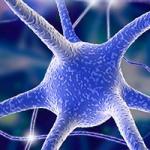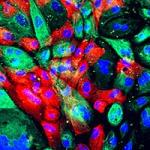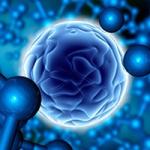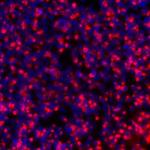
Priyanka Sivakami Narayan, Ph.D.
Stadtman Investigator
Human Disease Section, Genetics & Biochemistry Branch
NIDDK
Research Topics
Neurodegenerative diseases like Alzheimer’s disease are a growing public health concern. The extended and devastating course of these diseases, the increasing patient population, and the lack of therapeutic options all contribute to this pressing public health crisis. Our lab studies the ways in which genetic and environmental factors alter fundamental cellular pathways to increase susceptibility or improve resilience to neurodegenerative diseases like Alzheimer’s disease. We are pursuing these scientific questions with the ultimate goal of identifying novel therapeutic or preventative mechanisms for neurodegenerative diseases. Our research combines techniques from biochemistry, genetic screening, and neurobiology in human induced pluripotent stem cell-derived tissues.
Biography
- Postdoctoral Fellow, Whitehead Institute/MIT, 2013-2020
- Ph.D., University of Cambridge, 2012
- B.S., Stanford University, 2008
Selected Publications
- Yang LG, March ZM, Stephenson RA, Narayan PS. Apolipoprotein E in lipid metabolism and neurodegenerative disease. Trends Endocrinol Metab. 2023;34(8):430-445.
- Sienski G, Narayan P, Bonner JM, Kory N, Boland S, Arczewska AA, Ralvenius WT, Akay L, Lockshin E, He L, Milo B, Graziosi A, Baru V, Lewis CA, Kellis M, Sabatini DM, Tsai LH, Lindquist S. APOE4 disrupts intracellular lipid homeostasis in human iPSC-derived glia. Sci Transl Med. 2021;13(583).
- Narayan P, Sienski G, Bonner JM, Lin YT, Seo J, Baru V, Haque A, Milo B, Akay LA, Graziosi A, Freyzon Y, Landgraf D, Hesse WR, Valastyan J, Barrasa MI, Tsai LH, Lindquist S. PICALM Rescues Endocytic Defects Caused by the Alzheimer's Disease Risk Factor APOE4. Cell Rep. 2020;33(1):108224.
- Pantazis CB, Yang A, Lara E, McDonough JA, Blauwendraat C, Peng L, Oguro H, Kanaujiya J, Zou J, Sebesta D, Pratt G, Cross E, Blockwick J, Buxton P, Kinner-Bibeau L, Medura C, Tompkins C, Hughes S, Santiana M, Faghri F, Nalls MA, Vitale D, Ballard S, Qi YA, Ramos DM, Anderson KM, Stadler J, Narayan P, Papademetriou J, Reilly L, Nelson MP, Aggarwal S, Rosen LU, Kirwan P, Pisupati V, Coon SL, Scholz SW, Priebe T, Öttl M, Dong J, Meijer M, Janssen LJM, Lourenco VS, van der Kant R, Crusius D, Paquet D, Raulin AC, Bu G, Held A, Wainger BJ, Gabriele RMC, Casey JM, Wray S, Abu-Bonsrah D, Parish CL, Beccari MS, Cleveland DW, Li E, Rose IVL, Kampmann M, Calatayud Aristoy C, Verstreken P, Heinrich L, Chen MY, Schüle B, Dou D, Holzbaur ELF, Zanellati MC, Basundra R, Deshmukh M, Cohen S, Khanna R, Raman M, Nevin ZS, Matia M, Van Lent J, Timmerman V, Conklin BR, Johnson Chase K, Zhang K, Funes S, Bosco DA, Erlebach L, Welzer M, Kronenberg-Versteeg D, Lyu G, Arenas E, Coccia E, Sarrafha L, Ahfeldt T, Marioni JC, Skarnes WC, Cookson MR, Ward ME, Merkle FT. A reference human induced pluripotent stem cell line for large-scale collaborative studies. Cell Stem Cell. 2022;29(12):1685-1702.e22.
Related Scientific Focus Areas



Molecular Biology and Biochemistry
View additional Principal Investigators in Molecular Biology and Biochemistry

This page was last updated on Monday, November 24, 2025